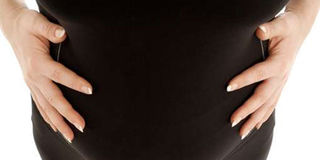There was nothing much to celebrate on Mother’s Day

According to the United Nations, 8,000 women die every year in Kenya of maternity-related conditions, the seventh highest figure in the world. FILE PHOTO | NATION MEDIA GROUP
What you need to know:
Women are still reported to die every day from childbirth-related complications and this is both maddening and shameful.
According to the United Nations, 8,000 women die every year in Kenya of maternity-related conditions, the seventh highest figure in the world.
- As newspapers and glossy magazines hailed mothers with perfectly coiffed hairdos, many others were battling for their lives and that of their children.
The extraordinary power of motherhood has never been in question and last Sunday, Kenyans joined the rest of the world in celebrating this power.
People’s phones were inundated with brightly coloured Mother’s Day forwarded messages and videos, each more cliché than the next.
MATERNAL HEALTH
Companies, small and big, stumbled over each other in a mad rush to determine who would send the most robotic texts ever to their “valued customers” wishing them a “Happy Mother’s Day”.
These messages were ironical because Kenya has been relentless in letting mothers down. Celebrating the day, therefore, is akin to thanking a donkey for kicking you.
The celebratory mood needed to mark such a day requires that there be something to inspire it in the first place.
And there isn’t. Women are still reported to die every day from childbirth-related complications and this is both maddening and shameful. According to the United Nations, 8,000 women die every year in Kenya of maternity-related conditions, the seventh highest figure in the world.
The Kenya National Bureau of Statistics Analytical Report on Mortality Volume IV (2017) indicates that maternal health is still a challenge to the government and other stakeholders. The risk is higher for younger age groups (15 to 19) and for women of older ages (40 to 44, 45 to 49).
Instead of spa sessions, gift hampers and dinners at expensive restaurants, a proper Mother’s Day gift could have been a lucky woman’s maternity fees being paid by Good Samaritans or those moneyed companies that busied themselves creating marketing videos for the day. It costs an average of Sh205,500 to deliver at a private hospital in Kenya, a figure much lower than what it costs to book a full-page newspaper or TV advertisement.
BEYOND ZERO
As newspapers and glossy magazines hailed mothers with perfectly coiffed hairdos for their selfless and enduring love, mothers who had no idea they were also being celebrated were battling for their lives and that of their children in different parts of Kenya.
These maternity-related deaths occur despite efforts by Kenya’s First Lady Margaret Kenyatta through the Beyond Zero campaign to make sure no woman dies while giving life.
Launched in 2014, the campaign has attracted goodwill and financial support from Kenyans, private companies and government institutions, who contributed through the First Lady’s Half Marathon.
So why are mothers still dying despite such grand efforts?
The focus of Beyond Zero was to leverage on and strengthen existing health facilities. One of the ways they chose to do this was through mobile clinics meant to reach far-flung areas, but these efforts have been marred by questions of sustainability. A 2016 investigation by the Saturday Nation revealed that the clinics were in dire need of drivers, nurses, clinical officers, clerks and lab technicians. It was also revealed that many counties were struggling to fuel them.
SEVERAL LAPSES
Perhaps the first red flag should have been the idea of “strengthening and leveraging on” existing health facilities. Leveraging on or strengthening suggest that there was a functioning healthcare system to work with in the first place. It’s no secret that Kenya has a sick healthcare system.
A Daily Nation report published in February 2018 indicated that several lapses in healthcare contribute to the deaths of over 80 per cent of expectant and new mothers. Essentially, four in five expectant and new mothers who die in hospital receive poor care where a different management could have saved their lives or that of their child.
The hoi polloi, the ones such systems and campaigns are meant for, are often left with the tough job of fighting for both their lives and those of their unborn children. These are the mothers who will never make news unless they die. The ones who have probably never seen a good hair day in their lives. The ones for whom maternal healthcare is a luxury they can’t afford. So where should such mothers turn to?
Mothers and their unborn children deserve better. As the Mother’s Day celebrations quiet down, let’s remember the ones who died while giving life too.
The writer is the editor of Living magazine; [email protected]





